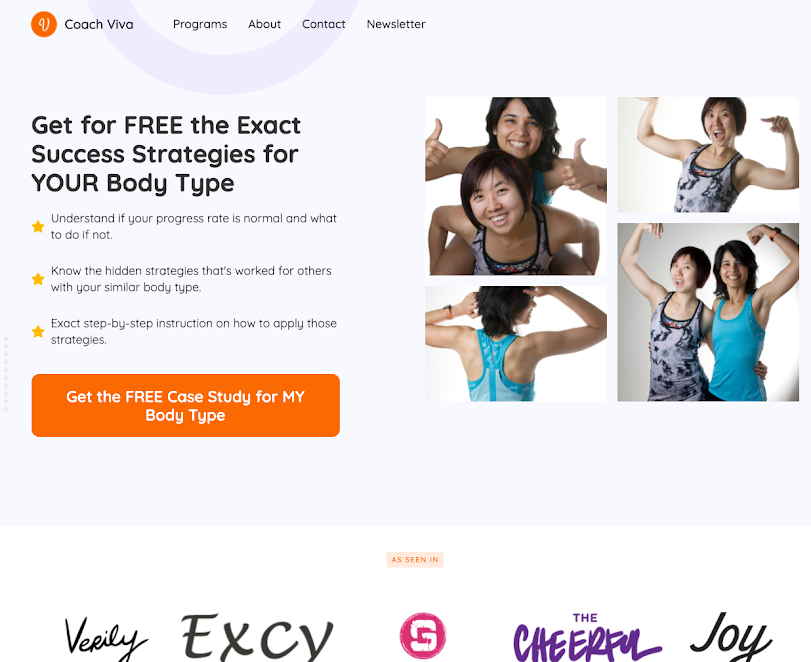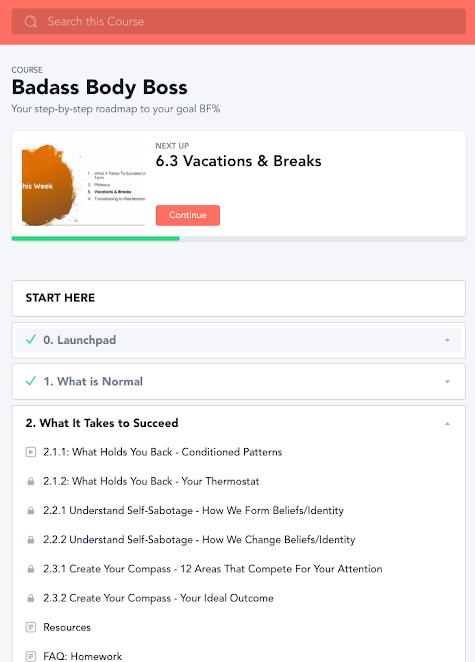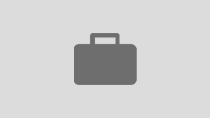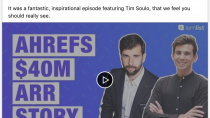Hello! I am Richa Prasad, co-founder and co-coach at Coach Viva.
Me and my co-founder, Lucy, total spent 10 years and over $45 000 on weight loss, we realized that every weight loss solution out there offers only a few pieces of the puzzle to becoming healthy and fit for life.
And we decided to create Coach Viva to give people the whole picture of what it takes: biology, nutrition science, exercise science, psychology, and the tools to implement it all in one seamless package. We also wanted to finally explain why all the contradictory information they've heard is true and false at the same time.
Our current offer is a productized weight loss service, and as of this week, we have kicked off our SaaS efforts. We made $16,000 in September 2020.
How did we validated our idea for Coach Viva?
We tried a lot of things to get Coach Viva up, running, and functional. The first thing we tried was customer interview success... while failing.
I interviewed members in the Quantified Self meetup group in Seattle, and a nutritionist I reached out to on Yelp to interview was generous and did a shoutout to her email list for volunteers to talk to me.
The interviews were successful in that I identified the thing people really wanted (insights into what to change to meet their nutrition, exercise, and body targets), but the audience itself already had a system that worked for them. So when I built what they told me and asked them to sign up, none did.
The next tip: we tried was our personal network. We built up an initial offer and decided to not only invite the people I had interviewed but also shout about it on all our personal networks.
We gained about 20 customers over the next three months purely through our personal network: friends and friends of friends who paid us the $25/monthly.
"We can't think of a more meaningful way to spend our time than building Viva".
For the next year we were stuck at 30 to 40 customers between the natural churn in a journey like weight loss and reliance on word of mouth for a service that's offensive to suggest a friend needs.
While the growth was lackluster for reasons ranging from the pricing (who believes quality coaching costs $25/mo?) to marketing mistakes, we validated that:
- People did indeed want the insights I had identified in the interviews.
- We got really concrete about what specifically these insights needed to be.
What went into building the initial product?
The initial product was one on one chat coaching over Facebook Messenger, where me and Lucy responded to everything manually.
It was four days to build a Messenger bot and a Coach Dashboard, which was essentially a barebones, homegrown Health Coach CRM hooked up to our bot.
About tech stack
Our Badass Body Boss program (the name of our current productized service, not the initial product) has several components:
- Daily Accountability App continues to be the Messenger Bot and the homegrown CRM built with React, Node.js, and Firebase
- Course & Community Mighty Networks
- Office Hour Calls WebinarJam
- Nutrition, Exercise, Psychology Plans Google Docs and Sheets
We have intentionally kept our tech stack very simple and used as many off-the-shelf solutions as we can.
How have we attracted users and grown Coach Viva?
After our validation is done, the next thing was to try directories. A month after a lead became a paid customer, we'd jump on a call to interview how they thought things were going. Frequently, they'd have many positive things to say. One day we decided that these would make awesome testimonials!
But no one wants to write a testimonial from scratch. So we decided that within an hour of getting off the call, we'd draft a testimonial using the exact words they said, email it to them to edit as they like, and then ask them to post their review directly to Google and Yelp.
This got us many reviews on our Google Business page, and it pushed us into the 40-50 customer range as we started ranking high for keywords like «online weight loss coach» and «weight loss accountability coach». While we don't get a lot of new customers directly from Google or Yelp, I know that prospects from other channels do look at the reviews to verify we are legit.
After directories, we tried YouTube. We started posting educational weight loss videos on YouTube in March 2019. We did a promotion for a $97 10-week program during 2019 Holiday Season and got two takers from our YouTube audience (about 500 subscribers at the time). Most of our subscribers came from product review videos. It showcased our strength, succinct analysis, while helping us ride keywords that were trending.
That was good, but we needed more, so we tried adding a sales engine. It wasn't really until March 2020 when we started seeing an influx of prospects and shot from $1500 monthly to $8000 monthly. I believe there's a few reasons for this.
The first is better keyword analysis. We bought Sunny Lenarduzzi's Authority Accelerator program and her "Sunny System" for YouTube growth freaking works. If you go to Social Blade and see our channel views, you'll see a hockey stick growth from when we bought her program in March 2020.
The second is age. I do think YouTube and any evergreen platform rewards consistent, smart contributions. Sunny's program compounded on the library we had already built with teaching us how to make even smarter contributions to YouTube. But we still get prospects who call us a "young company" as a potential objection (we've been around three years.) The mainstream consumer doesn't care about being an early adopter or jumping on customer interview calls, they just want stability, safety and trust, all of which time and persistence prove incredibly well.
The third was our transition to productized service. That gave us a name that speaks to their zero to hero journey: Badass Body Boss. Names like "Coach Viva" and "Big Rocks System" mean nothing to a customer. Our current program name speaks to what they want and I do believe this contributed to the influx. We're also now priced like a quality coaching program, so suddenly people started believing we know what we do just because of the price matching what quality means to them.
While the unique value continues to be our coaching, it doesn't "feel" like it to a customer if it's just chatting online with us, because in-person communication is great at troubleshooting but not at reassuring people long term when in a state of doubt and uncertainty. A course that lays out the big picture reassures them they know exactly what the journey looks like, and a community reassures them that the system works because they see others' successes even if they are stuck.
Fourth, we started mentioning our service in every video and email. This came about when a friend who is on our email list and watches our YouTube videos forgot that we did weight loss coaching, and paid over $1000 for another weight loss program. We decided no one will ever forget what we do and started mentioning in every video and email exactly who is our audience and what we do. Prospects started lining up.
Fifth, we started blatantly leaning into our nerdiness. We're engineers and our approach is foundations-up. We used to try to be more like other fitness YouTubers, but in March 2020, we decided to screw it all and become blatant nerds in all our marketing and sales materials. Surprisingly (but not so much in retrospect) this has made us stand out in the weight loss niche and rewarded us with our dream clients: analytical thinkers with a thirst for learning and personal growth.
Finally, we started building an actual sales funnel. There are numerous channels with lots of subscribers but zero revenue. The difference is the ones making bank have designed a whole sales funnel behind their YouTube channel. Ours is very simple:
- Hook: YouTube video + second-tier distribution (Instagram, Facebook, LinkedIn, etc.)
- Bait: A free workshop that speaks to why our program is different and repels those who aren't our target audience. About 28% of those who watch book a call.
- Sale: Those who stay until the end of the free workshop get invited to book a free call with us to gauge fit with Badass Body Boss. By this many jumps, these are very qualified prospects who convert at 50% on average.
- Follow Up: we have other Baits like our Lead Magnets. These put people on our email list where we nurture them and drive them to the live version of our free workshop. To be honest, the Lead Magnets are working great for email subscriber growth but the conversion of email subscribers to sales isn't working great for us yet. We're tinkering.
What's our business model, and how have we grown your revenue?
We are using the revenue from Badass Body Boss (our productized service) to:
- Fund our SaaS app. We are at ramen profitability and will be drawing a salary at the end of 2020 (yay!)
- Have a pool of committed beta customers for our SaaS app. While I've wanted to build the SaaS app from day one, I am glad we didn't. The one on one coaching service, to productized coaching service, to private SaaS app, to public SaaS app is a journey I did not plan for. But it's going to make our SaaS 100 times better than anything we could have created without it.
At each step, we have manually tested and duct taped solutions we believe customers need for long term success. This process has spun many ideas we hadn't even thought of, all for cheaper and far more revenue per customer than testing through software.
What's next?
Our immediate goals are:
- Create v1 of the SaaS app to test with our Badass Body Boss customers
- Optimize our sales engine, to the point where we don't have to do sales calls anymore
Has COVID-19 impacted us at all?
COVID coincided with a sharp change in our strategy. We went from a subscription model to a lifetime high-ticket coaching service model. Thus, it's difficult to distinguish cause and effect.
What I can say is that we have seen great success with the new model and COVID has likely been a neutral or positive influence in traction of the new model.
What are the biggest challenges we've faced and obstacles we've overcome? If we had to start over, what would we do differently?
Marketing has been the biggest challenge by far.
I really learned a lot of what not to do!
People don't care about your vision until they care about you. Our mission is to democratize weight loss coaching, and we thought that would compel people to join us. Nope! The mainstream consumer doesn't care about grand visions of an idealistic future. They want to know what you can do for them right now. Otherwise you're like a random dude on the corner of a street yelling about your random future visions.
We priced wrong at the start. We jumped to our mission far too soon. Since Lucy and I
were doing everything manually, we should have priced like an actual coaching service; not $25/mo. The low price point plus indifference toward our mission meant people thought we were bad coaches.
We didn't think in terms of emotional states and beliefs. Each one of us has a set of internal, external, and vehicle beliefs when considering a purchase or even when considering putting in our email address for a free lead magnet. Once we started listing every belief we could think of, that the customer held when they looked at each of our offers and addressing them one by one in our copy, our conversion rates shot up tenfold. Similarly, when we started thinking of emotional states that weren't addressed well with our original offer (chat coaching), we created a better offer without needing homegrown software.
We also shouldn't have confused the product with the offer. Our customers aren't buying weight loss (product.) They're buying confidence, self esteem, and mastery (offer.) People buy our program without knowing the name of a single module in our course, not having seen any screenshots of what's in the program, or even how many people are in our community. They trust us because we understand their struggles and desires as intimately as they do.
We had a lot of failures before we found what worked. How did we stay motivated?
There were four main factors that kept me and Lucy motivated.
The first was a complete belief in what we're creating. We believe what we're building must and will exist in the world. It's just a question of who succeeds in building it. We believe our days are well spent solving this problem whether or not we succeed.
The next was each other. It's a huge boon to have someone be in the trenches with you. The psychological reassurance that someone is as worried, as dedicated and as committed as you are reduces worries significantly.
The next thing that kept us motivated were the experiments we hadn't tried yet. As long as there are experiments that we feel could work and haven't tried yet, we felt it's too early to throw in the towel. A pivotal moment happened when I left the marketing-advice-from-tech-people bubble, and started listening to pure marketers like MLMs, affiliates, coaches, and consultants. The list of experiments I could try exploded at that point and with that came more hope that we just haven't done the right experiment yet.
The last reason we stayed motivated was our coaching/productized service fallback. Every day, new weight loss coaches enter the market and are able to make ends meet. We felt that even if we can't immediately find marketing traction for our SaaS solution, we should be able to fall back on being weight loss coaches to extend our runway while we sort the SaaS traction issue. If others do it everyday, why can't we? The dots didn't connect for me on why it wouldn't work for us if it works for everyone else.
For me and Lucy, what, if anything, were we risking by going for this project?
It didn't feel like there were any big downsides.
Financially, both Lucy and I had saved up enough money before getting started, so we had a decent runway. We also agreed to the fallback of being coaches to extend that runway if the SaaS product we wanted to build didn't pan out immediately. We didn't see a reason the fallback wouldn't work for us since it works for the numerous weight loss coaches entering the market everyday.
"Market conditions and positioning have a far greater impact on the quickness of your success than product execution".
Professionally, we felt our skills and abilities would grow a lot faster building Viva than it would as an employee at a company. So if we had to return to a job, we both felt we'd be far more attractive candidates as a result of Viva anyway.
Personally, both Lucy and I are personal development junkies. We don't know of a quicker way to force personal growth than building a business.
We can't think of a more meaningful way to spend our time than building Viva.
What we found particularly helpful or advantageous?
For our team: Solve a problem you've personally struggled with and have intimate knowledge of. Get a cofounder who has also personally been through the same struggle and is passionate about solving it. Even if it's just the two of you, make it super clear what your expectations are of each other. Lucy and I didn't do this for a long time and it ended with the more dominating person taking on far too much work and the other person feeling purposeless and like a cog.
For our habits: Don't work more than 40-50 hours a week. Cleverness starts when smartness is not enough. I've personally only been able to turn on being clever when I have deadlines I cannot possibly meet through sheer smartness and hard work anymore. And when I get clever, my output multiplies for each unit of time spent.
Purposefully listen to people outside of your bubble. People who don't look like you, people you don't understand but are getting what you want (MLM marketers anyone?), people delivering messages in formats you don't like but are killing it. Branch out. Listen. Distill what they're doing into components. Use the components that connect with you. Throw everything else out.
Here's some resources for marketing and sales:
- Building a productized service with YouTube: Sunny Lenarduzzi's Authority Accelerator
- Building a productized service with Ads: Sam Ovens' UpLevel Consulting
- Sales Funnels: Russell Brunson's DotCom Secrets
- Copywriting: Russell Brunson's Expert Secrets and Sam Cart's One Page Funnel
What's our advice for casezz users who are just starting out?
Market conditions and positioning have a far greater impact on the quickness of your success than product execution.
An example for market conditions: Feedback Panda rode an awesomely timed wave when there weren't a lot of custom-built solutions for online teachers teaching English to Chinese kids. Their product execution was great, too, but in my estimation there's no doubt their market condition helped a lot.
An example for market positioning: It helps when there's a big gap left in the market where you have highly expensive solutions and then cheaper but less-than-tablestakes solutions. I believe Canny has positioned themselves wonderfully in their market.
Timing and positioning can be found iteratively but until then, you're going to find it takes longer to achieve the kind of success you want. We certainly are still in this camp.
Be careful who you take strategic and tactical advice from! :) If the person you're listening to is more than two or three years out from where you are, didn't face the same market conditions you are facing, and isn't resourcing their business the way you are, it's unlikely much of their strategic and tactical advice applies to you.












